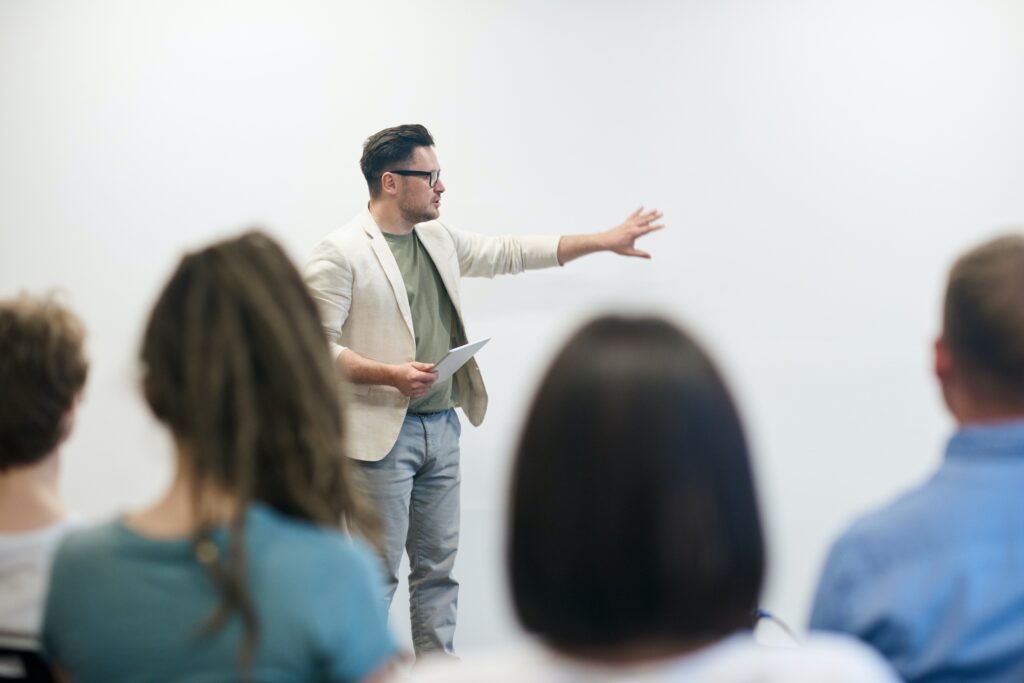Public speaking can be a daunting task for many people. It requires confidence, clarity, and effective communication skills. However, speaking with just your words is not enough to captivate an audience. Your body language plays a huge role in public speaking, and mastering it can make all the difference. Nonverbal cues can convey emotions, create a connection with the audience, and emphasize key points. In this post, we’ll explore some of the best nonverbal cues for effective public speaking and how to implement them into your speeches.
Confident Posture:
Great body language starts with good posture. Stand up straight, shoulders back, and head held high. Avoid fidgeting or crossing your arms as they can give off nervous and closed-off vibes. Keep your feet planted on the ground and distribute weight evenly. A confident posture sets the tone for the rest of your speech.
Eye Contact:
Eye contact is the best way to connect with your audience. It demonstrates that you are confident, engaged, and trustworthy. Make sure to scan the room, focusing on different sections to establish a connection with each audience member. Avoid looking at one particular spot or person for too long as it can become creepy or uncomfortable.
It’s also okay to find the one or two people that always seem to agree with your messaging and use them as anchors for your confidence.
Hand Gestures:
Hand gestures, when used appropriately, can enhance your speech and convey emotions. Use your hands to emphasize important points, create movement, and add variety to your talk. However, make sure not to overdo it or use distracting and unnecessary gestures. Keep hand gestures natural and in sync with your speech.

Facial Expressions:
Your face says more than any words can. Facial expressions can convey emotions, from happiness and enthusiasm to seriousness and determination. Smile when appropriate, show a genuine interest in the topic, and minimize any signs of nervousness or frustration. Facial expressions can also help you connect with your audience, it’s like adding color to a painting.
Body Movement:
Command the stage. Don’t just stay in one spot (unless you’re on an online meeting). Walk to different sides of the stage and stay rooted for a few seconds (don’t pace back and forth). Use movement to express yourself, create excitement, and capture attention. Move with purpose and keep it natural. Avoid pacing excessively or unnecessary movements as they can become distracting.
Mastering body language is a vital aspect of effective public speaking. The best way to practice this is in front of a mirror or recording yourself. By incorporating confident posture, eye contact, hand gestures, facial expressions, and body movement, you can deliver a memorable and impactful speech. Body language can convey your message, establish a connection with your audience, and demonstrate your confidence. The more you practice, the more natural and effective your body language will become.
For more in-depth technical tips on public speaking, check out our post here.



